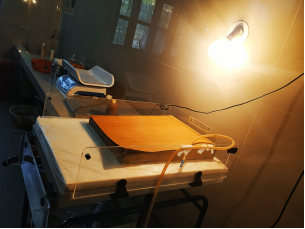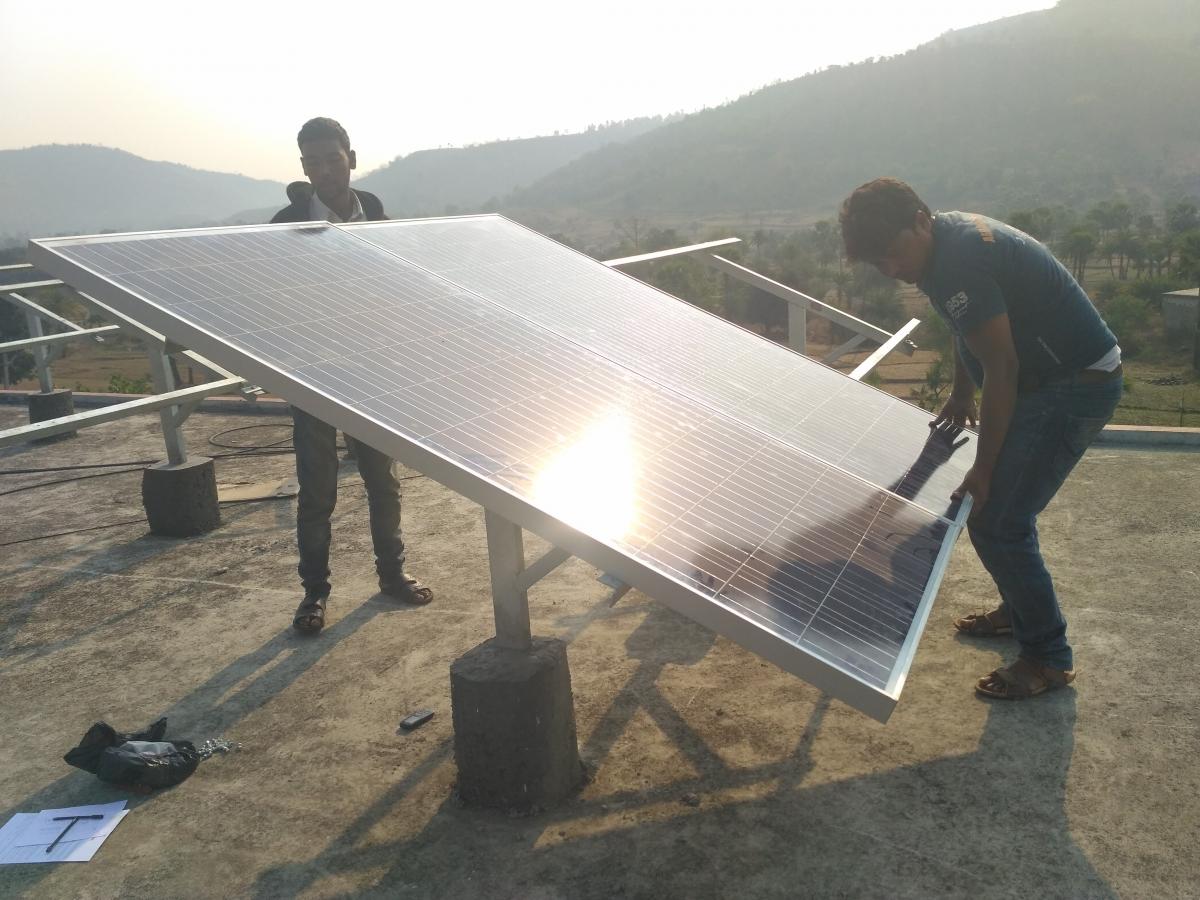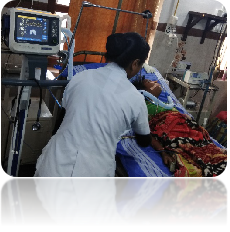
Hospital in remote Jharkhand district taps solar power to improve services for patients
In Sahibganj district, north-eastern Jharkhand, Premjyoti Hospital is the only medical facility within a radius of 200 km, that has the staff and services to perform surgeries. More than two decades ago, in 1996, a team of enterprising doctors set up this hospital to cater to the predominantly tribal community of the region. The district had no electricity then. In the later years, when grid power reached this remote region, power was still available for barely 6-8 hours every day, especially in the peak summer months, when temperatures soared up to 45 degrees Celsius.
Dr. Benedict Joshua, the hospital’s superintendent till 2019, said, “Till as recent as 2017, nurses in the labor room had to use halogen lights for phototherapy. We did not have a reliable power source to run the baby warmer.”

Today, the nurses no longer depend on halogen lights. In February 2017, Dr. Joshua, in a visionary move, installed a 15 kilowatt 'peak' (kWP) off-grid rooftop solar photovoltaic (PV) system with battery back-up on the hospital terrace.
Reaping the benefits of renewable energy
Thanks to this effort, the staff can run a few fans in the in-patient wards and the outpatient department (OPD), offering respite to the patients especially in the peak summer months today. In 2019, when Dr. Joshua handed over the hospital administration to Mr. G. Raja, the solar PV system continued to benefit the doctors, staff and patients at Premjyoti Hospital.

With a reliable source of electricity, the hospital can perform laboratory tests throughout the day and give reports in time to treat critical patients now. They do not have to delay surgeries because they can sterilize equipment in the autoclave machine and switch on the operation theatre lights when the requirement arises. When they have to perform an X-ray during OPD hours, they switch off a few loads to be able to power up the X-ray machine with solar energy. This would not have been possible without the solar PV system.
Before the 15kWp system was installed, the hospital staff also faced challenges in registering the patients and maintaining up-to-date accounts. They had to enter the information manually in the cash counter at the pharmacy and keep track of inventory in notebooks. The staff is now saved from this drudgery with computer connections at the pharmacy and the registration desks.

When the sun is out, the solar PV system supports these services. The battery continues powering up some of the critical loads for another two hours—at least until 5 pm.
Limited access continues to stress hospital
The current hospital load is 25kW (kilowatt) and the solar PV system is meant to support only one-fifth of it. Hence, it is still a challenge to run the remaining loads even when the grid is available, because of voltage fluctuations. Housing quarters for doctors and hospital staff that are not connected to the solar PV system are dissuaded from using basic household equipment like induction stoves or heaters during winters. When grid power is not available, there is no option for the people living within the hospital premises, but to run inefficient Diesel Generators (DGs) or to spend the night hours with inadequate lighting obtained from kerosene lamp. Access to water during outages and the voltage fluctuations is an equally big challenge. Such poor infrastructure can drive up attrition rates amongst hospital staff, posing a serious problem for such hospitals operating in remote locations, given the challenges in attracting new staff and training them to understand the local context.
Besides, the solar PV system cannot support all existing loads and the hospital has been unable to invest in any new equipment. The hospital has not installed air conditioning (ACs) in its laboratory, Neonatal Intensive Care Unit (NICU) or High Dependency Units (HDU) because of the unreliable electricity connection. High ambient temperatures can result in fever cases among newborns. Also, it has often been associated with technological glitches, like erroneous laboratory test results and other similar problems.
Despite the fact that this hospital is a referral unit for patients from five administrative blocks nearby, and oversees nearly 1,000 childbirths every year — it does not have a blood bank. A reliable electricity connection is a basic necessity to run blood banks.
Unlocking funds is key
At the onset, when Dr. Joshua was exploring the possibility of a renewable energy system, he realized the key challenge was funding. Even after subsidies, the cost of the system was high. Due to lack of funds, Premjyoti Hospital had to limit the size of the solar installation to 15kWp. The obvious choice was to focus on the most critical loads, and to wait for the second phase to connect the remaining loads, including the housing quarters to solar power.
Two years on, funds are still not available. The subsidies have dried up and grants are equally difficult to access given the remoteness of the location, and the lack of interest from the Corporate Social Responsibility (CSR) community in such areas. The hospital does not have the requisite collateral to take on a debt. Funds have to be set aside for investing in medical infrastructure, as well.
Like Premjyoti, many hospitals for poor communities continue to strive to deliver the best-possible services in the face of immense infrastructural and financial challenges. The staff in these hospitals are dedicated and willing to serve for a cause despite limited resources and conveniences. However, such hospitals are few and far between: several critically ill people in the remotest parts of India are deprived of medical treatment or spend hours of precious emergency-care time trying to access the best health care services available in the vicinity.
Adequate and dependable electricity access in hospitals like Premjyoti will give them a new lease of life. A renewable energy source which is reliable and sustainable will stabilize equipment, computers and cooling and lighting loads in the hospitals, as well as improve the quality of life of the staff living in the premises. This, in turn, will reduce staff turnover and ensure better and consistent services to the patients in the long run. However, to achieve this, funds need to be unlocked, sustainable financing models developed, and a favorable ecosystem built – this is key to ensure that 24X7 power is available to deliver services consistently to help the hospitals thrive.
Photographs from Premjyoti hospital team.